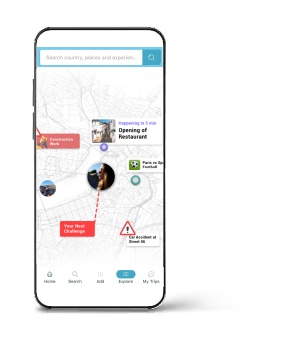
Tourism is an important cultural and social activity undertaken by millions of people around the world and has a huge impact on the economy in many countries. Thus, there is an immediate demand for tourism-related tools and applications that can have a big impact on society in current fast- paced and changing lifestyle. In recent years, we have seen the emergence of many systems that provide useful information to travellers and tourists. Travel route planning and recommendation systems have become very popular applications for planning and organizing tourists’ journeys and trips. Below we highlight some directions on how AI-based technologies can greatly enhance users’ trip planning experience.
Smart routing in smart cities
Tourists tend to visit unknown places and require assistance in planning possible itineraries for their trips. A tour itinerary is a sequence of geographical locations along with time intervals between every two consecutive locations. Tour Itinerary recommendation requires not only knowledge about the points of interest and the multiple transportation modes at the destination, but also the environmental context of the trip and tourists' personal preferences to recommend a “satisfying” trip. This is a challenging problem, especially when personal constraints need to be considered, such as budget limit, dynamic availability of activities based on the selected trip period, the types of attractive sites the user is mostly interested in, etc.

Big data mining for travel recommendations
Nowadays, the web is considered the primary source of information in urbanized countries for people when searching for appropriate travel destinations. Mainly, there are several sources of user-generated content used for travel route planning and recommendation systems, including GPS trajectories, tourism blogs, microblogs and geotagged photos, and check-in data. Implementing large-scale personalized trips requires digesting and managing large volumes of data streams and near-real-time processing techniques. Personalized travel recommendations take advantage of this multitude of data types to extract the best attractions and travel routes at a given destination by computing the similarities between user profiles and interests, and the historical patterns followed by like-minded travellers. Besides considering environmental alterations, personalized travel routes should be able to include dynamic events and activities (e.g., festivals, sport tournaments and concerts) occurring at the destination and within the travelling period, thereby increasing users’ enjoyment and satisfaction.

Intelligent mapping
Smart trip planning can be leveraged by an intelligent mapping environment that lays the ground for the development of unparalleled smart city applications and location-based services, including the exploration of live attractions on digital maps for personalized travel sequence recommendations. The democratization of map-making in the Internet age is in stark contrast to the traditional view of cartography. Today's maps are often crowd-sourced and make use of ‘Volunteered Geographic Information (VGI)’, where users can feed maps with their own inputs. For example, people can share their favourite hiking track or best local dish. This will enrich layered maps with personal data. In addition, ‘Live Maps’ now contain data that is updated in real-time. For example, live updates on bus schedules, traffic conditions, restaurant opening hours, and road accidents can be displayed. Moreover, using mainstream social network services such as Foursquare check-ins, Flickr images, tweets, Yelp reviews and spatially-referenced news, people are posting and sharing their own social contributions to Live maps..


